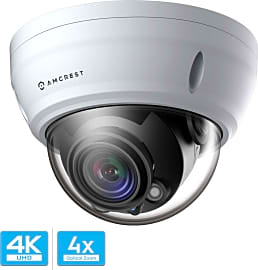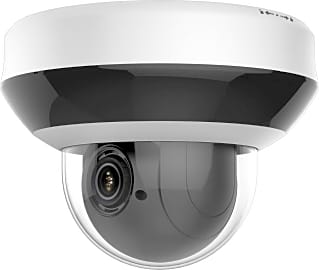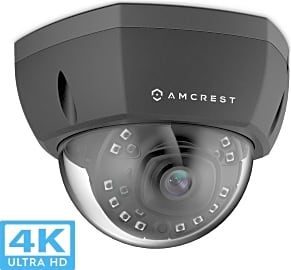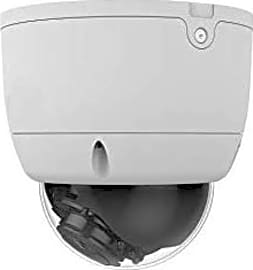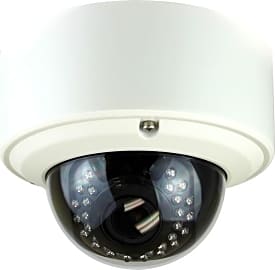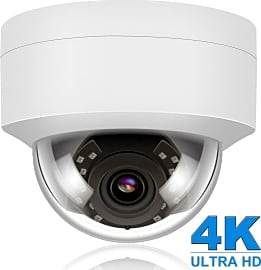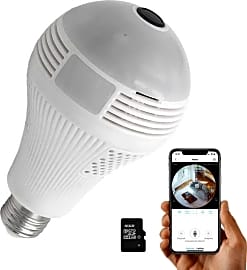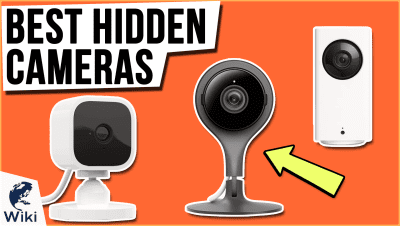The 8 Best Dome Cameras

This wiki has been updated 36 times since it was first published in October of 2016. Whether you are looking to protect your home or business, one or more of these dome cameras can be a significant part of the solution. Our selections for this category include models that are suitable for both indoor and outdoor use, and we ranked them by their image quality, night vision performance and durability. We also tried to pick options that can be easily installed by a competent DIYer. When users buy our independently chosen editorial selections, we may earn commissions to help fund the Wiki.
Editor's Notes
January 21, 2021:
It was a fairly straightforward round of updates, although we did take the opportunity to replace two of our options that were suffering from some availability issues – the Panoeagle Motorized and LaView Home Security System – with a couple of new choices that, despite not being perfect matches for the category, we felt would still be of interest to users shopping in this space.
Our first new addition, the ToGuard AP40, differs from typical dome cameras because it isn’t designed to be ceiling mounted. Instead, it’s equipped with a wall-mount bracket and an integrated solar panel that should save you from ever needing to change its batteries.
Our second pick, the Naiyo Light, screws into any standard E27 bulb socket, and can double as a motion light. Because most modern light fixtures don’t include downward-facing, exposed bulbs, the practical applications for this choice are limited, but for certain users – say people trying ramp up the surveillance in their garage or carport – it could be a fantastic solution. Given that, in combination with its extremely affordable price, we still thought that it was a cool bit of gear worth including at the bottom of our list.
January 01, 2020:
While most of the dome cameras out there boast a durable covering to protect, and in some cases obscure the direction of, their lenses, some of them go a step further to receive what's known as an IK rating. Like the more familiar IP ratings that help consumers understand a given product's potential to stand up to dust and water, IK ratings signify another form of durability, specifically against vandalism. An IK 10 rating, for example, indicates protection against a 20-joule mechanical impact, roughly equivalent to a mass of 5 kilograms being dropped onto it from a height of 400mm. For potential buyers installing these cameras outside businesses where vandalism is a concern, this is particularly important.
For everyone else, especially homeowners who are more concerned with thieves that might not even notice a camera, weatherproofing, resolution, and ease of installation are paramount. We wanted to make sure that none of the models on this list shot in anything under 1080p, with a good number offering 4K resolution. That caused us to remove the Yi Dome among others, replacing them with much finer options like the Amcrest UltraHD Varifocal. It was a bit of a disappointment to find that the majority of 4K dome offerings on the market are limited to 15 frames per second, especially when other security options including wireless systems have 4K 30fps to offer. Fortunately, many of the 4K models here shoot 30fps in 1080p and sometimes resolutions above that.
A Brief History Of Security Cameras
For most of human history, we've had one unshakable belief: that we're being watched.
For most of human history, we've had one unshakable belief: that we're being watched.
Of course, most of the time that belief was chalked up to belief in a higher power, or perhaps a mental illness. In the past few decades, however, there's been another eye in the sky watching you, and this one's making sure you don't steal.
When surveillance cameras hit the scene in 1942 though, they did so for an all-American purpose: to record Nazis.
Well, actually, they were invented by the Nazis, and designed to allow German engineers to monitor the launching of V-2 rockets, but we like our explanation better. Regardless, the system was successful enough that it was copied and released in the United States for commercial use after the war.
It wasn't long before high-value targets — banks, casinos, government institutions, etc.— began to see the benefit in having a few extra eyeballs looking around. However, since there was no way to capture the video from the feed, these surveillance systems required people to constantly monitor them, preventing them from being cost-effective for most businesses.
When the VCR was created in the 1970s, it gave security personnel the ability to record footage and play it back later, reducing the amount of manpower necessary and making CCTV systems more attainable for the average business.
It wasn't just corporate interests that took a shine to this new technology, either, as many cities started installing security camera systems in an effort to fight crime. The city of Olean, New York, was the first to attempt it, setting up multiple cameras along its main street to deter criminals. New York City put up cameras in Times Square in 1973 in order to prevent muggings and harassment by prostitutes, but the results were mixed at best.
The 1980s brought with them microchip technology, which allowed for surveillance systems to use Charged Coupled Devices — which is a fancy way of saying they could record in low light. This allowed store owners to monitor their businesses long after they went home for the day, and without having to pay for a night watchman.
A decade later, digital multiplexing enabled people to record from several cameras simultaneously, as well as use time-lapse and motion-sensor recordings.
The two terrorist attacks on the World Trade Center in 1993 and 2001 ushered in a new age of surveillance, as businesses of all sizes realized they needed to keep closer tabs on the people frequenting their stores. Today, these systems are cheaper than ever, easy to install and manage, and capable of producing high-quality video — the kind that's admissible in court.
Best Places To Put Your Dome Cameras
The great thing about surveillance cameras is that their presence can actively deter crime, so you don't have to worry about calling the cops, reviewing the footage, and hiring a bounty hunter to track down that 8-year-old who ran off with a handful of free candy.
For them to be effective deterrents, however, they need to be installed in the right locations.
Make sure there are no obstructions, and install them high enough that they can't be easily smashed.
Any door leading outside of your home or business should have a camera in the area. After all, if anyone breaks in after hours, this is where they'll likely be entering. You can even place a dummy camera in an obvious location, then have the real thing hidden somewhere in case the bad guy doesn't get the hint.
Have a few near any first-floor windows, as well, especially ones that don't face the street. Smarter criminals are more likely to target these, as they assume you're already watching the doors and road.
Any interior cameras should be placed in wide areas where they have a clear view of the surroundings. Make sure there are no obstructions, and install them high enough that they can't be easily smashed.
You can also stash a few motion-activated models in rooms that are off-limits to guests or the general public. If you really want to be sneaky, you can even plant a couple hidden recorders in places that otherwise look safe and neglected.
Hopefully, your cameras will keep any ne'er-do-wells from even attempting anything shady, and you'll never have any reason to check them.
Easy Ways To Keep Your Home Safe
While installing a few security cameras is a great start, it's far from the only way to keep your home safe that you have at your disposal.
If you take a little bit of preventative action, you can drastically reduce the likelihood that your house is the one a thief targets.
The biggest thing to remember is that you want to make your house look as uninviting to criminals as possible (this rule also works with in-laws). Don't give bad guys any places to lurk, so install lots of lights, keep your bushes neatly trimmed, and don't leave any ladders or other easy means of ingress readily available.
Be careful not to tip your hand as to whether or not you're home, either. Don't let mail pile up or leave all the lights off, and definitely don't post your entire itinerary on social media (for that matter, don't accept any friend requests from people whose location is listed as "the Big House," either).
Make sure you advertise the fact that your house is under surveillance, too (and you should do this even if it's not). Post signs from security companies, make your cameras easy to spot, and remember that a "beware of dog" sign is worth its weight in gold.
If you take a little bit of preventative action, you can drastically reduce the likelihood that your house is the one a thief targets. If all else fails, though, you can always invest in a doormat that says, "The neighbors have nicer stuff."


